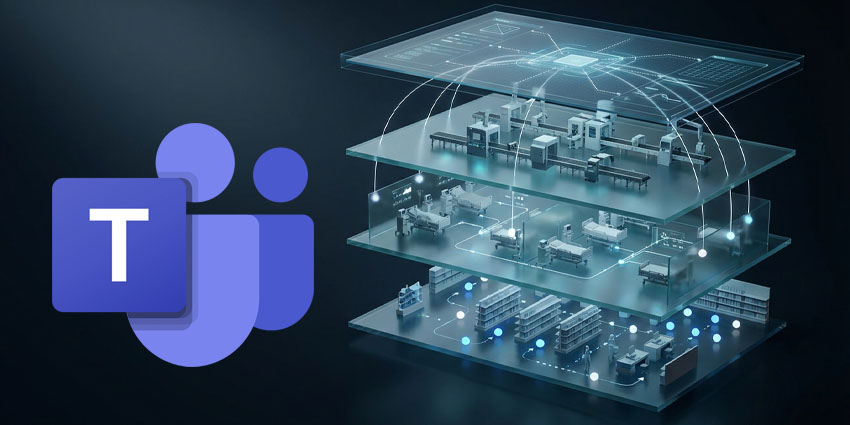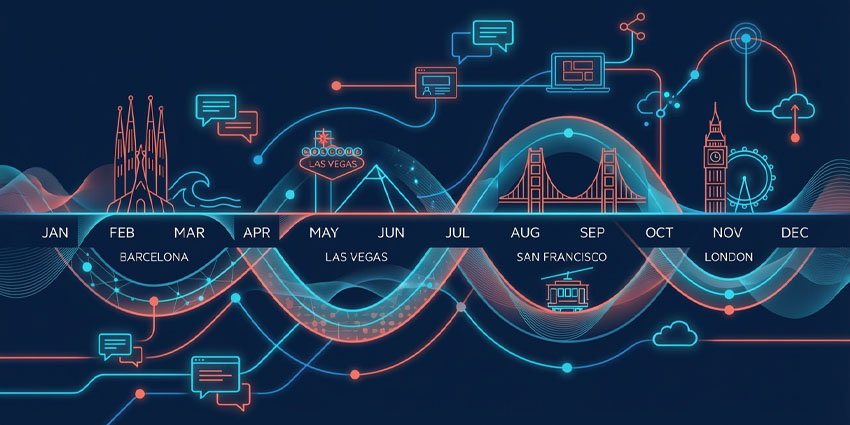In today’s uncertain economic climate, many companies are looking for ways to cut their infrastructure and communications costs.
Two changes in particular are having far-reaching impact on the choices that need to be made to keep a reign on costs while helping the workforce to be more productive. The first is that working practices have undergone significant changes – with many more employees working away from their offices. The second change is the wholesale migration of traditional on-premises Unified Communications platforms to the Cloud.
Employees who are more mobile or come from Gen Y and Z do not need traditional desk phones any longer – they need a modern endpoint of the cloud platform which moves with them and helps them to do their job. There is only one tool which allows this – their mobile phone.
“Modern mobile handsets now have the capability to support two separate mobile subscriptions, even on two different networks, simultaneously.”
“Not a lot of people realise that, and it’s probably the rise of the roaming eSIM which has played a role in helping it gain attention” Mark Brunwin, VP of Marketing at Tango Networks, said.
eSIMs are just an electronic form of the older generation of plastic SIM cards. They are becoming ubiquitous – helped on by Apple, whose latest devices don’t even have a SIM card slot. They have many advantages such as a much lower carbon footprint , and are also much easier and quicker to install, achieved simply by scanning a QR code.
The incredibly powerful feature of supporting a second business SIM as a UC endpoint has been fully leveraged by Tango Networks. By providing an employee with a business eSIM – that operates just like an office desk phone and can be installed in a personal mobile in minutes – removes the need to provide a Desk Phone.
“What happens with a cloud UC migration, if you’re moving your business from the old, traditional PBX to the cloud, you’ve got an all important decision to make about endpoints,” Brunwin said.
“Do I saddle an employee with a desk phone when a lot of those employees are no longer in the office? Do I buy them a $1,000 business smart phone which is not connected to the UC platform? Or do I provide them with the UC mobile App, which they are unlikely to use to make business calls? Perhaps there is there a better option”
That better option is a Tango Extend eSIM – which is directly integrated with the existing cloud UC platform. That means it can be given a desk phone number from the existing pool and all business calls made from and to that number will transit the UC infrastructure – so can be recorded and included in any AI call analytics.
The reduction in Desk Phones and company provided mobile phones can save a business between 30 and 40% of current communications costs.
Mobile First UC Systems
Tango Networks’ solution of integrating mobile devices with existing UC systems fundamentally changes how businesses think about endpoints in their communication infrastructure.
“What we’ve done is create a way to use a mobile phone as simply an endpoint on an existing cloud UC system like Microsoft Teams or WebEx calling,” Brunwin explained.
“So instead of deploying another desk phone, you can use either a company mobile phone with one of our SIMs, or a BYOD personal device with one of our eSIMs, and it becomes an endpoint on the unified communications platform.”
This integration brings mobile devices fully into the corporate communication ecosystem, allowing employees to use their existing smartphones as extensions of the UC system.
What this means is now companies can significantly reduce the costs of buying, maintaining, and powering office phones by having employees to use their own phone for work.
But far from being an unwelcome burden for employees, this change comes as a welcome for workers.
“Research says only about 6% of people use the apps to make business calls,” Lee Essex, SVP Global Sales and Marketing at Tango Networks, said.
“You have to go into the app like Teams to make the call, and that’s inconvenient.”
Tango Networks’ solution instead leverages the phone’s native dialer, dramatically improving adoption and usage rates among employees.
Although concerns may arise by mixing business with leisure, the nature of eSIMs allows a dual persona to exist on the same phone.
“One of the messages we’re trying to convey at the moment is the fact that you can have a dual identity on your personal phone, one for personal use, completely separate from the one that we provide, which is for business use,” Brunwin said.
Not only does this enable users to maintain separate business and personal identities on a single device, but it can connect the calls from this persona to a company’s UC system.
“In regulated industries like the financial services industry, there are regulations like FINRA or MiFID II, and every single employee who makes and receives phone calls has to have them recorded,” Brunwin explained.
But with Tango Networks’ BYOD Mobile eSIM solution, mobile calls route through the UC platform, allowing the same recording infrastructure to capture all communications, regardless of device or location.
This also applies for things like AI, where the communication had on the mobile device gets routed through the UC platform to allow it to work over it.
Equally, this routing means the same contract can be had for all phones.
That allows users to take advantage of Tango Networks’ roaming, which works in 39 countries within the basic price plan and built-in international coverage, which eliminates the notorious “bill shock” for its employees using the work number while traveling.
Cut Cost and Increase Ease
If these illustrations aren’t enough to convince you, Tango Networks has crunched the numbers so you can see beyond the scenarios and into the numbers.
“The scenarios that we put in there typically come out at sort of 30 to 40% cost savings by changing the mix to more eSIM mobility from desk phones and company-provided mobile phones,” Brunwin explained.
In today’s economic environment, such substantial savings present a compelling case for organizations to rethink their approach to business communications infrastructure.
But beyond costs, the rise of hybrid and remote work models is necessitating this move.
Rarely does a move to cut costs, improve operations, and future-proof a business come in tandem.
For those wanting to take the low-hanging fruit, Tango Networks offers a seamless pathway to modernize communication infrastructure, delivering immediate cost savings, operational resilience, and future-ready flexibility through eSIM-powered UC integration.







